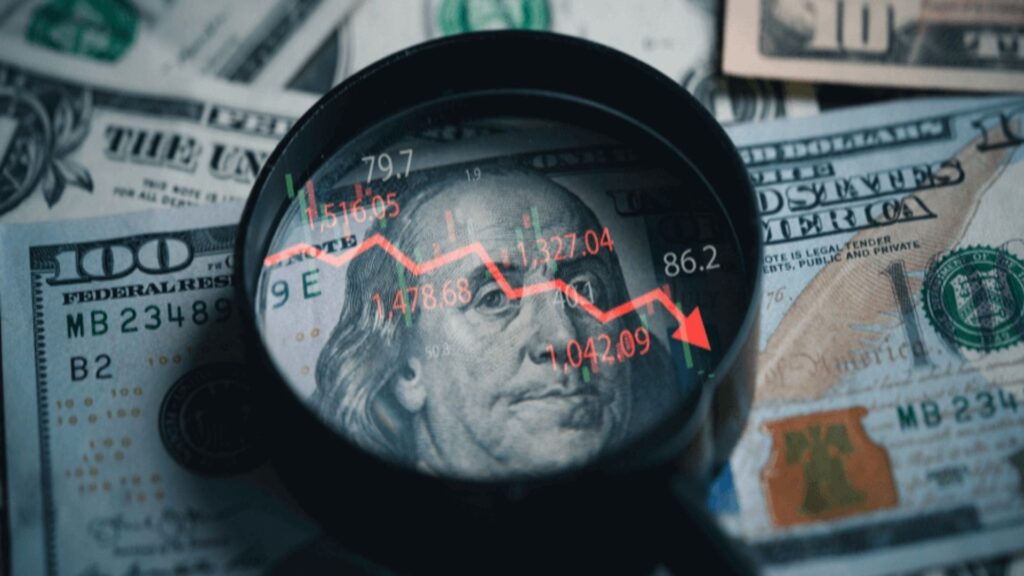Why Gold Keeps Climbing: Fed Moves, Debt Worries, and Asian Demand

Gold extends its winning streak to five weeks as Fed rate cuts, mounting debt concerns, and strong Asian demand converge to push prices near record highs. Plus: Ray Dalio warns that gold will outperform as U.S. debt becomes unsustainable.
Silver Eyes Record Highs as Fed Signals Cuts

Markets are digesting the Fed’s signal of two rate cuts in 2025, with the dollar swinging, jobless claims dipping, and recession indicators flashing red. Meanwhile, silver is surging — outpacing gold and closing in on record highs. Here’s what today’s key economic news means for precious metals investors.
Fed Decision, Food Inflation Shock, and More $4K Gold Predictions

The Fed’s first rate cut since 2020 may arrive today. Meanwhile, grocery bills keep climbing, Hong Kong is rebooting its gold hub, and Deutsche Bank sees $4,000 gold ahead. Here’s what it all means for metals investors.
Gold Nears $3,700 as Fed Meeting Begins

The Fed kicks off its pivotal meeting today with rate cuts all but certain, while gold tests $3,700 and silver surges past $43. Central banks now hold a stunning 40% of reserves in gold as the dollar weakens ahead of tomorrow’s decision. Here’s what precious metals investors need to know.
Fed Rate Cut Tuesday, Silver Hits $42, China Opens Gold Gates

Silver surges past $42 to a 14-year high as the Federal Reserve prepares for its first rate cut of 2025. Meanwhile, China proposes easing gold import rules, potentially unleashing massive new demand. Here’s what precious metals investors need to know today.
August CPI Shows Sticky Prices Won’t Derail Rate Cuts

Gold nears $3,700 as Fed pivots to jobs over inflation. UBS targets $3,800. Daily precious metals news for smart investors. Sept 12, 2025
Gold Near Records, CPI Data Looms, and Consumer Debt at $18.5 Trillion

Daily News Nuggets | Today’s top stories for gold and silver investors September 11th, 2025 Gold Steadies Ahead of Today’s Inflation Report Gold prices dipped slightly this morning as investors await the Consumer Price Index data due out today. The metal had risen earlier after yesterday’s surprise drop in producer prices strengthened the case for Fed rate cuts. Markets now see a quarter-point cut at the Fed’s September meeting as virtually certain, with two more cuts likely by year-end. Gold has surged nearly 40% in 2025, making it one of the year’s best-performing commodities. Rising rate cut expectations […]
AI Loses to Au: Yes, Gold is Beating Nvidia in 2025

Daily News Nuggets | Today’s top stories for gold and silver investors September 10th, 2025 Inflation Watch: All Eyes on This Week’s Reports Key inflation data dropping this week could show prices picked up speed in August, with economists expecting 0.3% increases across the board. But here’s the twist: Even if inflation ticks higher, the Fed is likely to shrug it off and cut rates anyway. Why? The job market is weakening fast, and that’s become the Fed’s bigger worry. The central bank appears ready to look past any inflation bump and focus on preventing a deeper economic […]
Dollar Drops to 7-Week Low, Gold Hits Another High

Daily News Nuggets | September 9th, 2025 — Here’s what you need to know about today’s most important economic and precious metals news: Dollar Drops to 7-Week Low, Gold Strikes $3,659 The dollar just hit a seven-week low after disappointing jobs revisions sparked fears about economic weakness and reinforced expectations for aggressive Fed action. Gold responded predictably, jumping to $3,659.10 per ounce —another record that underscores its role as the anti-dollar trade. The jobs data revealed deeper cracks in the labor market than previously thought, with revisions showing fewer positions created over recent months. It’s a classic playbook: when […]
Gold Soars Past $3,600, Up $1,000 This Year

Daily News Nuggets | September 8th, 2025 — Here’s what you need to know about today’s most important economic and precious metals news: Gold Smashes Through $3,600 as Critical Fed Week Begins Gold soared to an all-time high Monday, smashing through $3,600 as investors bet on lower interest rates ahead. Spot gold peaked at $3,636 per ounce, extending this year’s remarkable 38% rally. What’s driving the surge? A perfect storm of factors: anticipation of Fed rate cuts, aggressive central bank buying, and persistent economic uncertainty. The milestone extends beyond U.S. markets — in Canada, gold topped CAD$5,000 per ounce, a striking achievement considering […]
